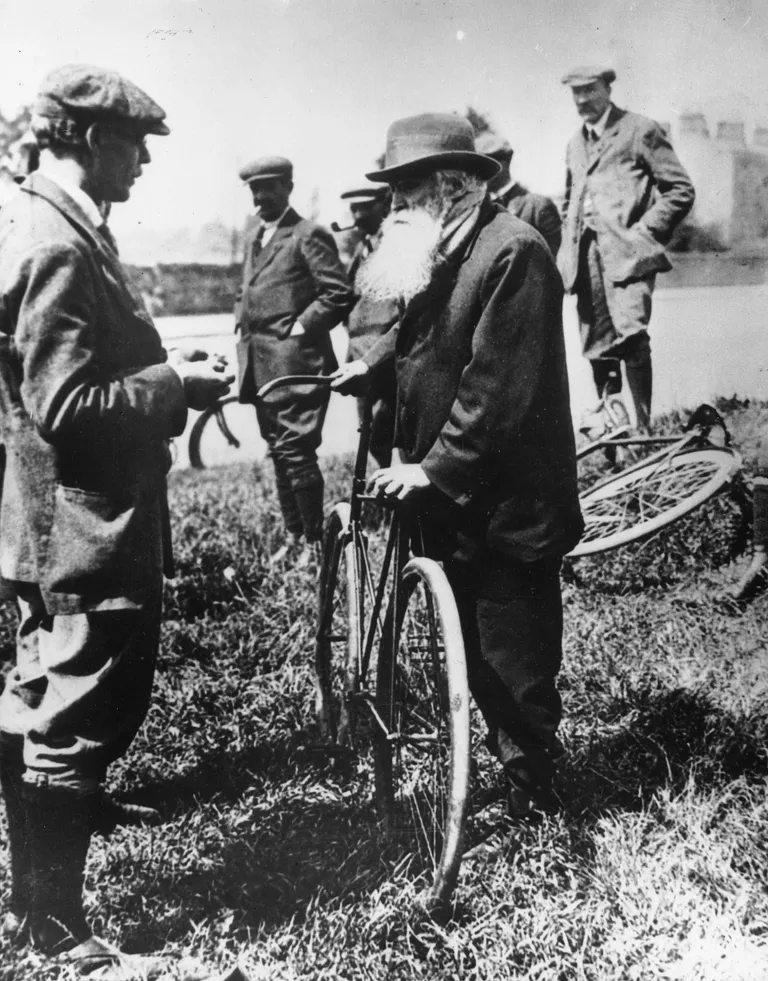The pneumatic (inflatable) rubber tires that are featured on millions of cars across the world are the result of multiple inventors working across several decades. And those inventors have names that should be recognizable to anyone who’s ever bought tires for their car: Michelin, Goodyear, Dunlop.
Of these, none had so great an impact on the invention of the tire than John Dunlop and Charles Goodyear.
Vulcanized Rubber
According to the latest statistics, consumers purchased nearly 80 million cars between 1990 and 2017. How many are currently on the road is estimated to be about 1.8 billion—and that was in 2014. None of these vehicles would be operational if it hadn’t been for Charles Goodyear. You can have an engine, you can have a chassis, you can have a drive train and wheels. But without tires, you’re stuck.
In 1844, more than 50 years before the first rubber tires would appear on cars, Goodyear patented a process known as vulcanization. This process involved heating and removing the sulfur from rubber, a substance that had been discovered in the Amazon rain forest of Peru by French scientist Charles de la Condamine in 1735 (although, local Mesoamerican tribes had been working with the substance for centuries).
Vulcanization made rubber waterproof and winter-proof, while at the same time preserving its elasticity. While Goodyear’s claim to have invented vulcanization was challenged, he prevailed in court and is today remembered as the sole inventor of vulcanized rubber.
And that became hugely important once people realized it would be perfect for making tires.
Pneumatic Tires
Robert William Thomson (1822–1873) invented the actual first vulcanized rubber pneumatic (inflatable) tire. Thomson patented his pneumatic tire in 1845, and while his invention worked well, but it was too costly to catch on.
That changed with John Boyd Dunlop (1840–1921), a Scottish veterinarian and the recognized inventor of the first practical pneumatic tire. His patent, granted in 1888, wasn’t for automobile tires, however. Instead, it was intended to create tires for bicycles. It took another seven years for someone to make the leap. André Michelin and his brother Edouard, who had previously patented a removable bike tire, were the first to use pneumatic tires on an automobile. Unfortunately, these did not prove durable. It wasn’t until Philip Strauss invented the combination tire and air-filled inner tube in 1911 that pneumatic tires could be used on automobiles with success.
Other Noteworthy Developments in Tire Technology
- In 1903, P.W. Litchfield of the Goodyear Tire Company patented the first tubeless tire, however, it was never commercially exploited until it was used on the 1954 Packard.
- In 1904, mountable rims were introduced that allowed drivers to fix their own flats. In 1908, Frank Seiberling invented grooved tires with improved road traction.
- In 1910, B.F. Goodrich Company invented longer life tires by adding carbon to the rubber.
- Goodrich also invented the first synthetic rubber tires in 1937 made of a patented substance called Chemigum.
- The first snow tires for passenger cars, Hakkapeliitta, was invented by a Finnish company (now Nokian) in 1936. The tire is considered one of the best in the industry and is still in production today.
Original Source: https://www.thoughtco.com/john-dunlop-charles-goodyear-tires-1991641

